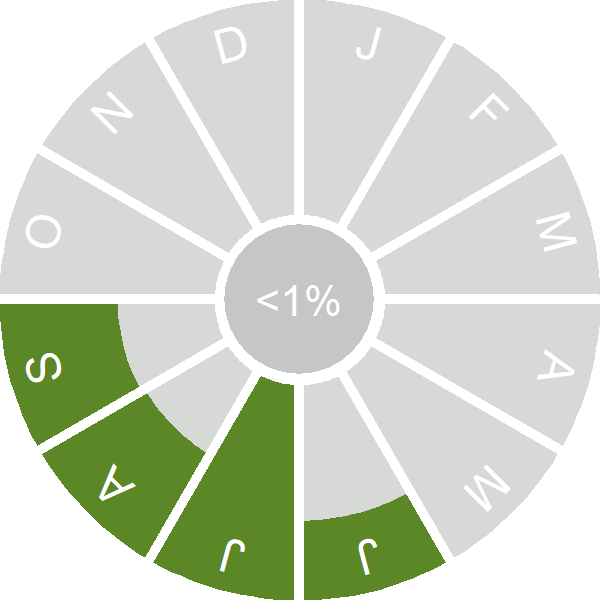Turkestan Shrike

Introduction
The taxonomy of shrikes is complicated. Daurian Shrike forms part of a group with Red-backed Shrike and Turkestan Shrike. Duarian and Turkestan Shrikes were formerly identified as 'Isabelline Shrike' and assignment of old records to the separate forms is difficult. It is a very rare visitor to Britain & Ireland from central Asia.
Called Red-tailed Shrike by some, the handful of records suggest that this is a spring visitor.

Key Stats
Status and Trends
Conservation Status
Population Size
Population Change
Population trends of this scarce species are not routinely monitored.
Distribution
This vagrant is too rarely reported to map distribution.
Distribution Change
This vagrant is too rarely reported to map distribution change.
Seasonality
Turkestan Shrike is a very rare vagrant.
Weekly pattern of occurrence
The graph shows when the species is present in the UK, with taller bars indicating a higher likelihood of encountering the species in appropriate regions and habitats.

Movement
Britain & Ireland movement
Biology
Survival and Longevity
Survival is shown as the proportion of birds surviving from one year to the next and is derived from bird ringing data. It can also be used to estimate how long birds typically live.
Classification, names and codes
Classification and Codes
- Order: Passeriformes
- Family: Laniidae
- Scientific name: Lanius phoenicuroides
- Authority: Schalow, 1875
- BTO 5-letter code: TURSH
- Euring code number: 15152
Alternate species names
- Czech: tuhýk turkestánský
- Danish: Turkestantornskade
- Dutch: Turkestaanse Klauwier
- Estonian: punasaba-kõnnuõgija
- French: Pie-grièche du Turkestan
- German: Rotschwanzwürger
- Italian: Averla codirossa
- Norwegian: Rødhalevarsler
- Polish: dzierzba rdzawosterna
- Slovak: strakoš turkménsky
- Spanish: Alcaudón colirrojo
- Swedish: turkestantörnskata
- Welsh: Cigydd Llwydfelen

